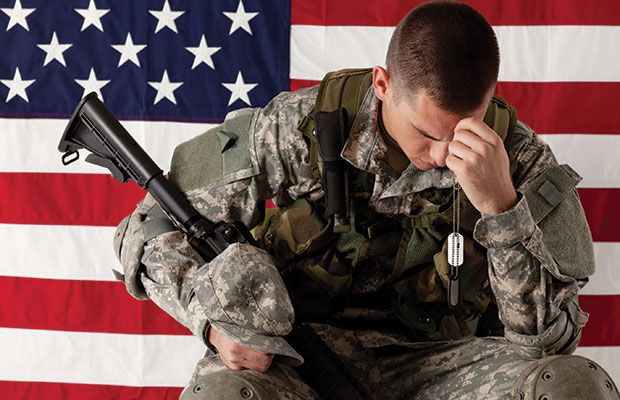 This year, Veterans Day will be observed on November 11th, and in Stanwood and elsewhere around the country, it will be a time for honoring those who have served their country in the past, as well as those who are currently serving. There is no longer a large number of veterans from World War II since it ended 75 full years ago, but there are still a great many aging individuals in senior home care who survived the Vietnam War, as well as forays into Afghanistan, Iraq, and the Middle East. Many of these veterans are heroes who sacrificed much in serving the United States, but the nature of heroism means that it usually comes with a significant cost.
This year, Veterans Day will be observed on November 11th, and in Stanwood and elsewhere around the country, it will be a time for honoring those who have served their country in the past, as well as those who are currently serving. There is no longer a large number of veterans from World War II since it ended 75 full years ago, but there are still a great many aging individuals in senior home care who survived the Vietnam War, as well as forays into Afghanistan, Iraq, and the Middle East. Many of these veterans are heroes who sacrificed much in serving the United States, but the nature of heroism means that it usually comes with a significant cost.
Finding jobs
For a moment, forget about the notion of military heroes you see in the movies. These are the individuals who throw themselves on a grenade to protect their comrades, they charge into a machine-gun nest to neutralize it, or maybe they save the day by single-handedly fighting off a group of invaders. Instead, just think about those veterans returning home to their pre-military lives, after having served some number of years in a particular branch of the service.
Statistics show that each year, the military discharges about 270,000 veterans into civilian life. Over 80% of these do not have jobs to come home to, which means they are immediately faced with the stress of how to support themselves, and sometimes the families they have started. That means every year, there are 216,000 American veterans who face the uncertainty of providing for themselves and their loved ones. In this case, the cost of investing three years in military life is the delay of beginning their own integration into society and the workplace. In cases where soldiers have become injured or disabled, social integration is always much more difficult and fraught with a number of obstacles.
Disabled veterans
You might be surprised to learn that a full 29% of recent veterans have acquired some kind of disability they developed during their period of service. That is nearly one-third of all military veterans, and it’s a shocking figure. The most common types of disabilities are post-traumatic stress disorder, hearing loss, spinal cord injuries, burns, missing limbs, and traumatic brain injuries. Statistics show that only about 43% of veterans with disabilities eventually become employed. Without employment, it is extremely difficult for any veteran to achieve integration with society, and to support a family or even themselves.
Of course, the Veterans Administration does step in to help some of these individuals, but it is far from a universal kind of prospect. Many disabled veterans don’t receive the kind of attention they need, simply because they slip under the radar and receive no attention from people in a position to help. It’s not much of an exaggeration to say that veterans with disabilities have less than a 50% chance of enjoying any kind of normal life in their post-military career.
Veterans with PTSD
Many veterans who are victimized with post-traumatic stress disorder (PTSD) have an extremely difficult time blending back into normal life after military service. In many cases, these individuals have been exposed to some kind of tremendous shock to the system which has left them on the verge of constant panic. In some cases, PTSD victims are left feeling disconnected from loved ones and from society as a whole, and simply feel emotionally numb.
Again, the Veterans Administration does provide help for many of these individuals, but care is not as good as it should be, and there are usually long waiting lines before receiving treatment. According to the National Center for PTSD, there is a substantial number of veterans who were exposed to combat situations, and as a result, suffered life-threatening experiences. These are always difficult to resolve emotionally, and in some cases, they never get resolved.
It is estimated that 15 out of every 100 Vietnam war veterans are afflicted by PTSD, and that number rises to 30 out of every 100 when you take into account the entire history of the war and its aftermath. In the Desert Storm Gulf War, about 12 out of every 100 veterans eventually became victims of PTSD, and in the two operations in Iraq, approximately 20 out of every 100 veterans eventually became troubled by PTSD.
In the case of veterans suffering from PTSD, it is entirely possible that such individuals might lose their career or possibly their family. Even worse, a significant number of veterans have already committed suicide due to the effects of PTSD. There are even more far-reaching effects because anyone afflicted by PTSD can have a huge impact on family and friends, and even the communities that they live in. The fact of the matter is that any veteran who may have participated in a combat situation while serving his/her country may be doomed to fight a second war for the rest of their lives.
